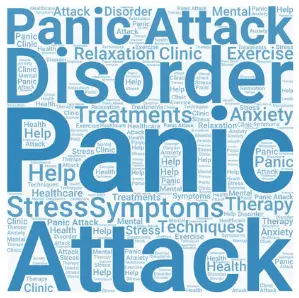Seizure Disorders and Their Impact
Seizure disorders, resulting from abnormal electrical activity in the brain, manifest in various forms such as muscle spasms, convulsions, and loss of consciousness. These symptoms can sometimes be mistaken for panic attacks. However, seizures often have specific triggers and are accompanied by unique physical symptoms like drooling and loss of bladder control.
The Nature of Panic Attacks
 Contrastingly, panic attacks stem from intense anxiety or fear. They can manifest with symptoms like rapid heartbeat and shortness of breath, which can resemble seizures. Importantly, panic attacks do not originate from abnormal brain activity but are psychological responses to stress or fear.
Contrastingly, panic attacks stem from intense anxiety or fear. They can manifest with symptoms like rapid heartbeat and shortness of breath, which can resemble seizures. Importantly, panic attacks do not originate from abnormal brain activity but are psychological responses to stress or fear.
Distinguishing Between Panic Attacks and Seizures
Key differences between panic attacks and seizures lie in their triggers, symptoms, and underlying causes. Seizures are characterized by repetitive, involuntary actions and may include auras. Panic attacks, while they can have physical manifestations, do not typically involve involuntary muscle movements like seizures. Additionally, panic attacks can sometimes trigger seizures in individuals with seizure disorders, complicating diagnosis.
Overlapping Symptoms and Misdiagnosis
Panic attacks and seizures share symptoms such as tremors and convulsions, leading to potential misdiagnosis. Cases exist where panic attacks have been incorrectly diagnosed as epilepsy. However, panic attacks often lack the specific trigger or aura associated with seizures.
Medical Tests for Accurate Diagnosis
To differentiate between panic attacks and seizures, medical tests like electroencephalograms (EEG) are crucial. These tests monitor brain activity and help identify whether symptoms are due to psychological triggers or neurological disturbances. Understanding these differences is vital for appropriate treatment.
Treatment Approaches
Treatment for panic attacks and seizures varies significantly. Panic attacks are often managed with therapy and anti-anxiety medications, whereas seizures may require antiepileptic drugs or other interventions. Accurate diagnosis is essential to ensure individuals receive the correct treatment for their specific condition.
FAQS
What is a seizure?
A seizure is a sudden, uncontrolled electrical disturbance in the brain that can cause changes in behavior, movements, or feelings. It is typically characterized by convulsions or loss of consciousness.
Can panic attacks resemble seizures?
Yes, panic attacks can sometimes resemble seizures, leading to confusion between the two. Both can cause physical symptoms such as shaking, trembling, and a sense of losing control.
What are some telltale signs of a seizure?
Some common signs of a seizure include sudden muscle contractions, jerking movements, loss of consciousness, staring spells, and temporary confusion or disorientation.
How can panic attacks and seizures be distinguished from each other?
While panic attacks can have physical symptoms similar to seizures, there are key differences. Seizures are caused by abnormal brain activity, while panic attacks are usually triggered by intense anxiety or stress. Medical tests, such as an electroencephalogram (EEG), can help differentiate between the two.
What are the overlapping symptoms between panic attacks and seizures?
Overlapping symptoms between panic attacks and seizures may include:
- Rapid heart rate.
- Shortness of breath.
- Sweating.
- Chest pain.
- A feeling of impending doom or fear.
Are the triggers for panic attacks and seizures similar?
No, the triggers for panic attacks and seizures are generally different. Panic attacks are often triggered by specific situations, thoughts, or phobias, while seizures can be triggered by various factors such as flashing lights, sleep deprivation, or certain medical conditions.
How are panic attacks and seizures treated?
Treatment for panic attacks often involves therapy, medication, and lifestyle changes to manage anxiety. Seizures are typically treated with antiepileptic drugs to control or prevent future seizures. The treatment plan may differ depending on the underlying cause of the seizures.
Can someone have both panic attacks and seizures?
Yes, it is possible for someone to experience both panic attacks and seizures. It is essential for individuals experiencing these symptoms to seek medical attention for proper diagnosis and appropriate treatment.
